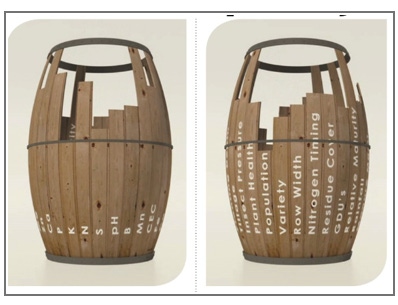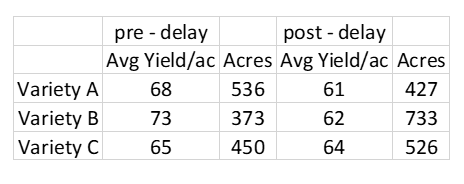November 28, 2018

What happens when one or two factors make other factors less valuable? Does harvest date become more important than the hybrid or variety planted?
For example, it’s been a very difficult harvest season. Many growers can document harvest delays causing 7 bushel/acre soybean yield losses. Since you can’t manage the weather, how do you deal with the impact of weather events? If our weather patterns are becoming more variable and extreme, how can you use your data to make better decisions?
Let’s use the impact of harvest delays as a data decision example.
First, if you are in an area where harvest weather delays were significant, you understand that harvest date might have become the lowest stave in the rain barrel – the yield-limiting variable. This means that if we compare yield by variety or hybrid by harvest date ranges – truly digging deeper in your data -- it might provide new insights.
Did some varieties lose less yield than others? Are there hybrids that held up better than others? If a company shows you aggregated data results where their hybrid or variety won, you might want to look deeper. Do these high-yielding hybrids and varieties have to be harvested early?

What is the impact of relative maturity differences as it relates to harvest delays? Every year, you make choices on different relative maturities within the seed portfolio you plant. You don’t want to over-react to a single event or year, so dig into your data analysis for multi-year trends. The economic loss from harvesting soybeans at less than 10% moisture is real and something we see almost every year. Can your data help you manage harvest risks?
Keep digging further. Is there a fertility relationship between your yields before and after harvest delay? Does yield loss from harvest delays warrant hiring a neighbor with extra capacity to custom harvest part of your crop? Could you be more efficient if you worked together with another farm operation? Seven bushels per acre is $60 per acre in revenue. Do you know what that trend would be over the last five years?
If my yield loss was greater for one crop versus another, should I change my crop rotation?
Notice all the questions in this column? I believe the best data analysis is driven by a question. Another way to think about it is, what decision do I need to make? Once you focus on specific decisions, the questions will follow. And more questions will lead you to want deeper data.
About the Author(s)
You May Also Like




